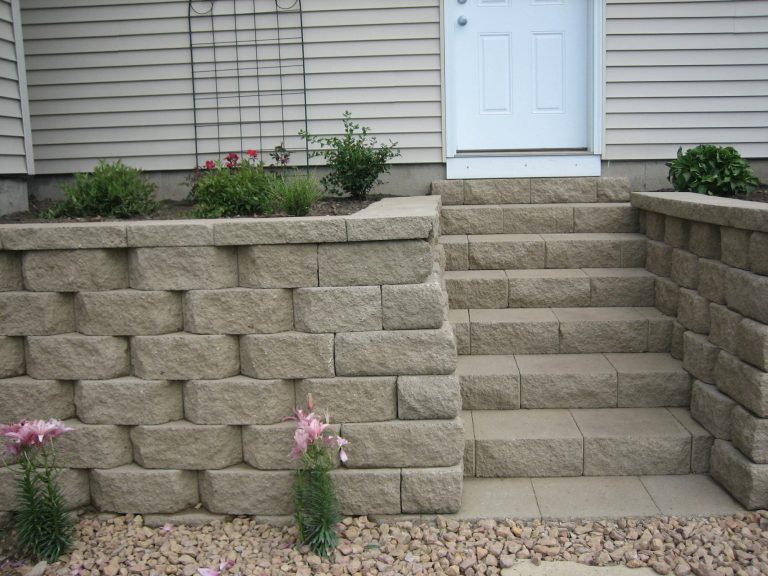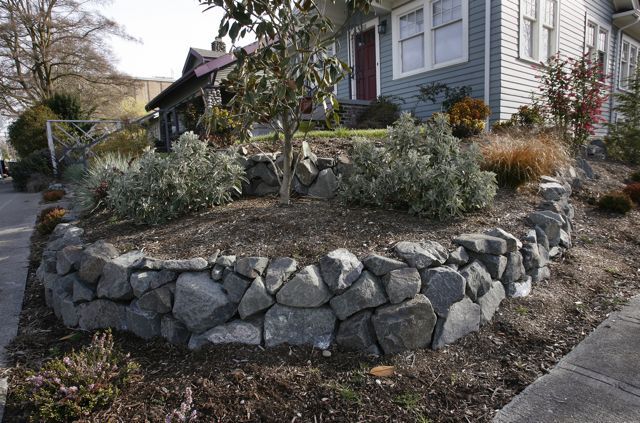Types of Landscaping Retaining Walls
Here in Victoria BC, it doesn’t take long to before one spots a retaining wall. Such is the nature of our geography. However, besides the need for these landscape features, they are also aesthetically pleasing to look at. These landscaping features are used to open up more space in people’s yards, improve drainage, and prevent erosion. In this short piece, we will point out and explain the most commonly seen retaining walls used in landscaping here in Victoria.
Block Retaining Wall

This is the standard retaining wall seen commonly in both residential yards and commercial ones. They look like a wall made of large blocks because that’s what they are. These walls most commonly use Allanblocks as that’s the most common supplier in town. They come in large blocks weighing 75 lbs each as well as smaller blocks that can be from 30 to 55 lbs. These smaller ones are used typically for more garden beds and are not recommended for structural purposes.
No mortar is used in their construction as they rely purely on gravity and a setback for structural stability. In addition to the setback, meaning the blocks are placed with a slight lean towards the back, the blocks have a groove or lip on their front, giving additional support for the blocks above and preventing them from sliding forward.
These blocks come hollow, which are to be filled with gravel, for increased stability, strength, and weight. They are then sealed at the top with a capstone, to give it a nice clean finished look. Capstones are usually secured with special adhesives but mortar can also be used.
These types of walls are installed for their clean and orderly look.
Boulder Walls

Luckily there are a few landscaping solutions that are available depending on preference, budget, and circumstances. Lower cost solutions include strategically planting shrubs and bushes. As the roots spread, the plants will help to hold the slopes together reducing erosion. Additionally, choosing the right mix of plants will give your hill a lovely look. It also can be ecologically beneficial by offering food and shelter for local wildlife as long as appropriate native plants are selected. The main disadvantage is that it takes time for plants to take hold and results are never guaranteed especially since it can be difficult for every square ft of a hill to be consolidated by plants. If your hill is already eroding, this solution will likely not be enough.
For those with more budget available, retaining walls can be used. A variety of retaining walls from block to boulder, mortared to dry stack, are available that can accomplish this. The benefit of a retaining wall is that when properly constructed, it will last far longer than just using plants, results are more or less guaranteed, and they are effective immediately as opposed to waiting months or years. Additionally, retaining walls open up new flat spaces which one can plant various small plants as well or use for other purposes. For some, retaining walls are also a more aesthetically pleasing landscape.
Final Word
In the end when it comes to which type of wall you choose for your landscape, it entirely rests on personal preference of style. Each type of wall gives a different look and feel and their installation offers different challenges. While it may seem easy to place blocks on top of one another, the reality is it’s time consuming and requires some expertise to build a stable safe wall. Therefore it is highly recommended to hire a local landscaper especially with larger structural walls.